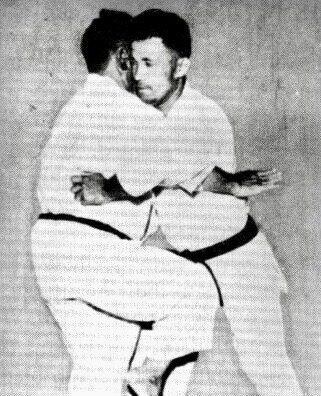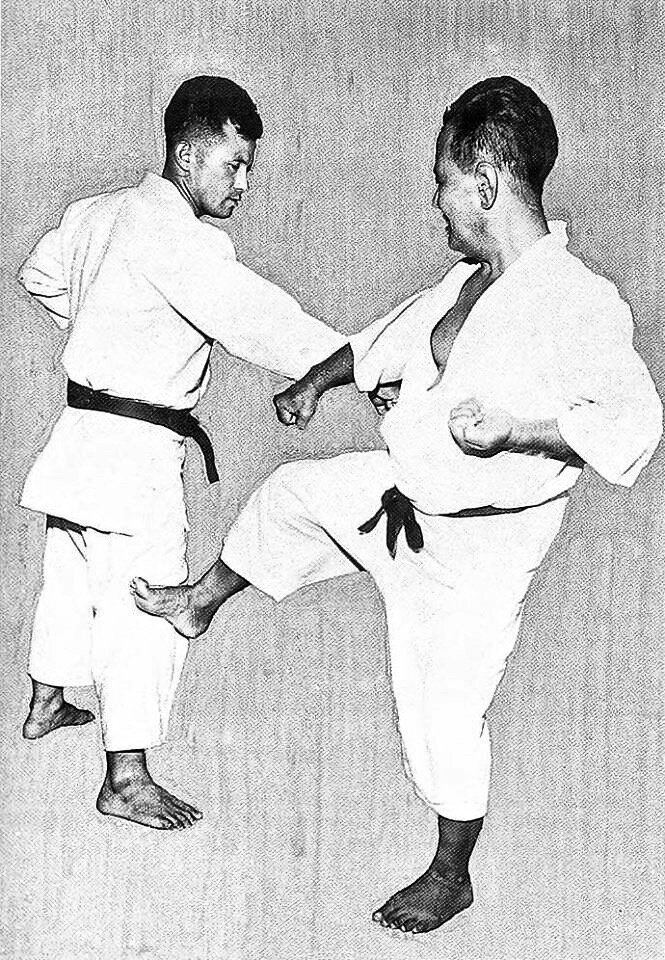The Jundokan So-Honbu Dojo:
History:
The Jundokan So-Honbu Dojo was founded by Ei’ichi Miyazato (July 5th, 1922 – December 11th, 1999), a senior student of Chōjun Miyagi.
Miyazato started training with Miyagi at the age of 15 after first being introduced the rudiments of karate by his father in 1936, who had been a student of Kanryō Higaonna.
Other than a brief interruption due to WWII, Miyazato trained continuously with Miyagi, and taught karate and judo alongside him at the Ryukyu Police Academy.
Upon his master’s death in 1953, Miyazato was selected by Miyagi’s most senior students as the most qualified to succeed Miyagi due to the time they had spent together. Miyazato then began teaching at Miyagi’s Garden Dojo.
In 1957, Miyazato established the Jundokan Dojo in Asato, Naha, and in 1970 the building was expanded and rebuilt in concrete and steel on the adjacent property where it is located today.
Ei’ichi Miyazato passed away on December 11, 1999, at the age of 77. His noteworthy students include Tetsu Gima, Tsuneo Kinjo, Teruo Chinen, Morio Higaonna, Kazuya Higa, Hisao Sunagawa, Masaji Taira, and Tetsunosuke Yasuda.
The Jundokan Today:
The Jundokan Dojo is now run by Ei’ichi Miyazato's son, Yoshihiro Miyazato. The dojo is a three storied building, in which Miyazato Kancho resides on the upper level.
The name ‘Jundokan’ (順道館) is sometimes translated as the “place to follow in the footsteps” (or something to that effect); however, that is not exactly correct. It is, in fact, a unique play on two concepts important to Ei’ichi Miyazato-sensei. Firstly, the first character ‘Jun’ (順) is the same character in the name ‘Chojun’ (長順), as in Chojun Miyagi-Sensei, the founder of Goju-Ryu Karate. But ‘Jun’ (順) can also mean ‘obedience’, ‘order’, and ‘justice’. Thus, the name ‘Jundokan’ can mean either “the house of the path of Chojun” or “the house of the path of obedience (to the Master)”— a sign of Ei’ichi Miyazato’s dedication to his teacher.
Official Shibu (branch) dojos of the Jundokan can be found in over 20 countries throughout the world today, all following the path of the Okinawan masters, both past and present.
Prominent officials in the Jundokan today include Yoshihiro Miyazato (son of Ei’ichi Miyazato) - Kancho (head) of the Jundokan; Tetsu Gima, chief directer; Tsuneo Kinjo, permanent director; and Kazuya Higa, permanent director.
Other important figures include Takayuki Miyakozawa, Hirokazu Aono, Yutaka Oshiro, Satoshi Taba, Takako Miyazato, Minoru Kinjo, Hiroshi Hirayama, and Yoshio Ishikawa.
The Jundokan is located at 2-6-13 Asato, Naha City, Okinawa, Japan. The training style at the Jundokan is free, with few official classes held. The dojo is open from Monday to Saturday, 5pm till 10pm.
Members arrive whenever they want during these hours and start training junbi-undō, hōjō-undō, kata, and bunkai by themselves. If they are lucky, they may receive guidance from a sensei or senpai (senior student).
The Jundokan’s Dojo Kun
The term ‘dojo kun’ (道場訓) means ‘training hall rules’. Each so-honbu dojo has their own dojo kun, usually devised by the master of that dojo.
The Jundokan’s dojo kun, devised by Ei’ichi Miyazato-sensei and based largely on that of Chojun Miyagi-sensei’s, is as follows:
Be mindful of your courtesy with humbleness.
Train yourself considering physical strength.
Study and contrive seriously.
Be calm in mind and swift in action.
Take care of yourself.
Live a plain and simple life.
Do not be too proud of yourself.
Continue training with patience and steadiness.
The Jundokan’s homepage can be found here: http://www.jundokan-hb.jp/english/intro.htm















